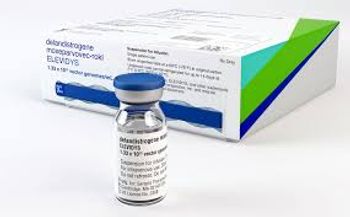
Epigenetic modifications may confer protection against Type 1 diabetes
Key Takeaways
- Children of mothers with T1D have a lower risk of developing T1D compared to those with fathers or siblings with T1D.
- DNA methylation differences at T1D susceptibility genes may explain the varied risk, with significant changes observed in the MHC region.
A new study suggests epigenetic changes at Type 1 diabetes susceptibility genes may explain the risk profile of children born of parents with the disease.
It has long been known that people with a first-degree relative with type 1 diabetes (T1D) have a higher risk of developing the disease themselves. However, that linkage also comes with a surprising caveat: the risk varies based on which family member has T1D.
Research has documented that people born to a mother with T1D have a substantially lower risk of developing T1D compared with people with a father or sibling with T1D. But the reason for the difference hasn’t been sorted out.
In a new
“We observed DNA methylation changes at multiple type 1 diabetes susceptibility genes in children born to mothers with type 1 diabetes,” explained Sandra Hummel, Ph.D., of the Helmholtz Munich Institute for Diabetes Research, in a news release.
Hummel and colleagues noted that while the risk of T1D varies depending on which parent has T1D, previous research has shown that the genetic susceptibility to T1D conferred by parents is comparable among people with mothers with T1D and people with fathers with T1D. In other words, the increased risk associated with having a father or sibling with T1D must be associated with early-in-life epigenetic programming. They noted that environmental influences in the womb — such as maternal smoking or stress — have already been linked with genetic changes that affect the risk of other diseases.
Hummel and colleagues pulled blood DNA samples from children enrolled in two prospective longitudinal studies of babies at increased risk of T1D. They then conducted epigenome-wide association studies (EWAS) on 790 children with a mother with T1D and 962 children with a mother not affected by T1D. Hummel and colleagues identified differential DNA methylation at multiple loci and regions that are transcriptionally relevant and associated with immune function. The differentially methylated genetic locations were primarily in the Homeobox A gene cluster and the major histocompatibility complex (MHC) region.
“The MHC region is known to confer the major genetic susceptibility and resistance to type 1 diabetes,” explained Raffael Ott, Ph.D., the Institute for Diabetes Research’s lead scientist and the study’s first author, in a news release. “We observed that the epigenomic changes in these children were associated with the expression of 15 type 1 diabetes susceptibility genes.”
Next, the investigators sought to see how these changes might be associated with T1D risk.
They used 34 differentially methylated positions at T1D susceptibility loci that they said were reflective of exposure to maternal T1D and used those to create a methylation propensity score. They then used their scoring system to assess children without a mother with T1D and found that lower methylation propensity scores were associated with the development of islet autoimmunity. In other words, patients with lower methylation propensity scores had a lesser degree of protective epigenetic modifications. Thus, the investigators concluded that environmental factors affect the risk of islet autoimmunity through epigenetic changes to certain susceptibility genes.
Hummel and colleagues said the methylation score system they developed may be a useful tool in assessing individual risk of T1D. They said it could be integrated into current polygenic risk scores that predict islet immunity of T1D. They also said it might also be possible to use therapeutics or lifestyle modifications to alter DNA methylation and thereby potentially alter the risk of progression to T1D. They said future studies should examine the potential for therapeutic intervention into the DNA methylation processes they identified. They said additional studies should also include a more diverse patient population, as the majority of people in the two cohorts used in this study were of European descent.
Newsletter
Get the latest industry news, event updates, and more from Managed healthcare Executive.

















































